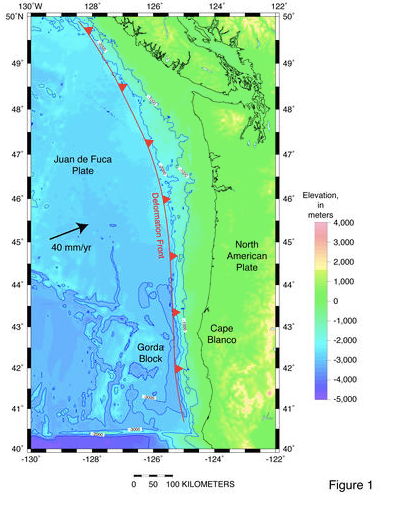My interest in sailing began in the New York City area — with its summertimes on the Hudson River and the Long Island Sound -- where the average water temperature is 75 degrees, not 50, with air temperature up in the 90s. Sailing is something a reasonable person would want to do, not something that is reserved solely for holy fools.
That is the summer.
In the winter, the Atlantic is no place an amateur sailor should be. Snow, ice, wind chill into the teens and beyond, coupled with the absolute abandonment of water sports except by those hardy souls who go ice dipping on New Year’s Day, make it a good idea to read about next year’s water adventures from the comfort of your arm chair, or, if you have the time and funds and a compleat seagoing life, head for Florida long about October. That is how things are done on the East Coast.
I have had to make a huge mental adjustment in dealing with the next step of the journey and that is What Is Sailing in Tacoma?
Plate techtonics in the Pacific Northwest make the coast a hazardous business from the vantage of a small craft, as seen in the below diagram. Where the plates meet, there is underwater geology that results in waves too harsh for moderate craft to readily head out a few miles, then back in to coast. It is no cake walk, and only seasoned professionals should be doing it in boats large enough to handle the ocean.

(Image in common domain, locatable at https://www.usgs.gov/media/images/plate-tectonic-setting-coast-washington)
Everyone in the Puget Sound area takes this so much for granted that there is not even a thought of WHAT IS OUTSIDE? The Puget Sound is the Hotel California. You can check out any time you like, but you can’t ever leave. Only the blue ocean sailors get to cross that water on their way to Tahiti. This melds into the very idea of what is to be done with our boats, and that is something I did not find in the blogs, forums, and YouTube channels as I came back to the PNW luckily just ahead of Covid-19. Atlantic sailing has the potential of going a few miles off the coast and watching for bars — er, marinas -- as you go south, with the except of Cape Point at Cape Hatteras, or “widow maker." When a bad situation threatens, you can tuck into the Intercoastal Waterway and motor it on this 19th-century artificial inland river designed for commercial craft of the size of our modern sailboats or slip into the Chesapeake Bay and enjoy the great outdoors in the comfort of an ambient temperature of 75 degrees and swimming water.
The Pacific is always cold, even in Mexico, and marine conditions make sailing north practically impossible outside of a very narrow seasonal range. If you get caught in Baja two weeks too late, you are trucking the boat home, not sailing her, or risking an unattended vessel in a foreign country.
The infrastructure and the amenities of the East Coast’s gorgeous retirement community of liveaboard and coastal cruising do not exist here at the same scale.
What does exist is a temperate zone of perpetual coolness that is not really cold and a longish season that is truly prohibitive only in the darkest months of winter, especially in the Lakes, and the sight of water, water everywhere. Who in their right mind would not want to reach out and touch it — and touch it more?
And the most beautiful unspoiled “snow falling on cedars” wilderness imaginable, right up to the beach. It is a great situation of constant sailing in a masterably limited area, and probably everyone knows everyone, and that is part of the fun.
You couldn’t do this in the Long Island Sound. It is full of people and pollution. Rules, rules, rules, and you better have a lot of cash, which I don’t.
I am glad I made my umpteenth cross-country move and expect to do it again. I have friends who bi-coast -- it is the greatest thing ever if you live perpetually out of a suitcase, as would be possible with the space constraints of a 28’ Spencer, and that is part of the charm of liveaboard. But this Covid thingie has interrupted my usual meandering, and pairing up with a builder too good to let get away has brought in the unexpected boon of this boat project in reasonable hands.
But back to the real thing here. The ambient temperature, the depth of the water, the periodicity of the tides, and the general infrastructure of small pleasure craft are different between the two coasts, but I still don’t like the idea of waiting until retirement to sail.
The kinesthetic matching of the neurology and the muscles to the constant movement of a sailboat; a deep knowledge of how to adjust one’s body and the boat based on physiological clues like that particular bobbing of the water, the feel of the wind, the position of the tell-tales on the sails, where to spot danger in this particular part of the bay, in real time with diminishing reflexes, makes it wiser to start sailing when one's body is still able to adapt to the skill, if sailing is something real.
I know aging. The minute you sit down for good, you sit down for good.
An ugly boat that works is a better idea for an artist/nurse’s aid, not a showpiece, if we plan to do more than socialize at the Yacht Bar — or write about it, as some might opine, given my actual life history which is more of writing than doing things on the water.
